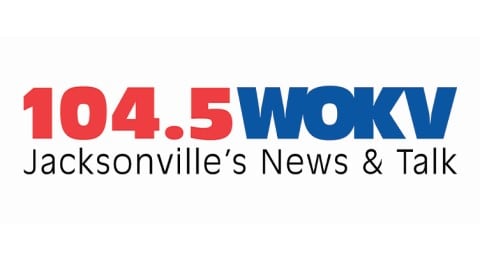For the first time, we’re hearing straight from the El Faro’s Captain what kind of issues the ship faced ahead of sinking in Hurricane Joaquin.
Captain Michael Davidson called TOTE Services' Designated Person Ashore John Lawrence- who is also the Manager of Safety and Operations- around 7 AM on October 1st, which is the day the vessel sank. In the voicemail, Davidson communicated a "navigational incident" during which a scuttle popped open and they had taken on water, leaving them with a "pretty good list". He said the crew was safe, but he wanted to speak with Lawrence- who was the go-between for the ship and TOTE Services.
AUDIO: El Faro Captain Davidson's call with TOTE Services' Designated Person Ashore
Lawrence told a Coast Guard Marine Board of Investigation that he immediately called Davidson back, and that the Captain had a calm demeanor, so he didn’t get the impression there was “grave danger”.
Davidson had also called TOTE Services’ Emergency Call Center, during which Lawrence admits he sounds more “frustrated”.
AUDIO: El Faro Captain Davidson's call with TOTE Services' Emergency Call Center
Lawrence says the call center was following the right protocol, like taking the time to ask Davidson for a callback number in case they lost connection. During the call, however, when the representative asks Davidson to spell the ship’s name, he told her “the clock is ticking”.
Davidson communicated to the call center that his situation was a "marine emergency"- saying the hull breached, there was water in three holds, they had lost propulsion and the engineers couldn't get it back. He wanted to be connected to a qualified individual with the company.
Lawrence was able to then reach Davidson. That call wasn't recorded, but Lawrence says the Captain remained calm, saying while the main engine wasn't working they had stopped the in-flow of water and the crew thought they could pump it out. He further said the ship had a 15 degree list. Davidson talked about engaging various alerts, so Lawrence decided to let him go and handle the on-ship duties while he, in turn, called the Coast Guard.
Lawrence first called the Coast Guard Regional Communication Center in Norfolk, who then pushed the case to the unit in Miami, that reconnected with Lawrence. Lawrence’s call with the Coast Guard Miami was also played, during which the parties involved classified the case as “not in distress phase”, and therefore not something they would look to evacuate people from the ship for. Based on the information they had available, they instead began treating the case as a “disabled vessel” and spoke of where El Faro could drop anchor and TOTE’s responsibility to have it towed.
AUDIO: Coast Guard Sector Miami's call with TOTE Services' Designated Person Ashore
While the Coast Guard refers to El Faro as without power, Lawrence says that was a misstatement that he didn’t correct at the time. He says he has no reason to believe the El Faro lost power, and was in fact under the impression power was still working, since Davidson talked about engaging the pumps to remove water.
At no time was Hurricane Joaquin mentioned in the calls or in Lawrence's conversation. Lawrence says he wasn't initially aware of exactly where the El Faro was in relation to Joaquin, however he knew the general vicinity because Davidson had emailed shortly before about his intention to use an alternate route on the way back to Jacksonville in order to avoid the storm.
It was only later, when the Coast Guard escalated their response to search and rescue, that Lawrence began to escalate the seriousness of what happened.
El Faro's boilers had been recommended for service following a September survey, and those were set to be addressed during a November drydock. It's unclear based on testimony to this point if this could have contributed to the mechanical issues the ship was facing.
WOKV will continue to follow the Coast Guard Marine Board of Investigation. You can continue to get instant updates on Twitter.

:quality(70)/cloudfront-us-east-1.images.arcpublishing.com/cmg/SKX4RKW645ERTATCLA4V2FVRKQ.png)
:quality(70)/cloudfront-us-east-1.images.arcpublishing.com/cmg/LUKNNZ5OYND3VELR3WLRJYAB6I.jpg)
:quality(70)/cloudfront-us-east-1.images.arcpublishing.com/cmg/G63CA3KUKEJZX7AY5OUWUGR4ZM.jpg)
:quality(70)/cloudfront-us-east-1.images.arcpublishing.com/cmg/PBWSZFRPIJUIHI54ZBAHHHCNRU.jpg)
:quality(70)/cloudfront-us-east-1.images.arcpublishing.com/cmg/3MB2H4XLAMJXLDBAT6VCUAPOQA.jpg)
